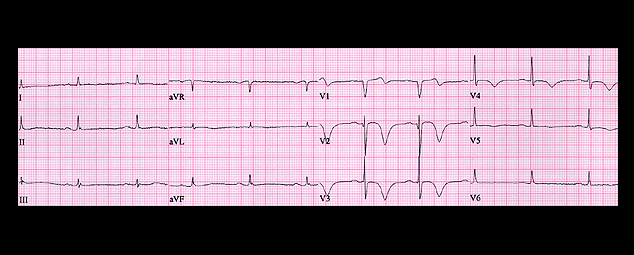
The deeply inverted T waves in leads V2-V4 with QT prolongation may be associated with both cardiac and non-cardiac diseases. When they follow an episode of chest pain, they usually indicate an ischemic event localized to the region of the inverted T waves. Changes in the mid-precordial leads (V2-V4), as in this patient, predict a high grade stenosis in the proximal left anterior descending coronary artery and often indicate spontaneous reperfusion. These changes are sometimes referred to as the “Wellens Sign” and were discussed in the Ischemia Chapter (see pages 6.3.5-6.3.8).
